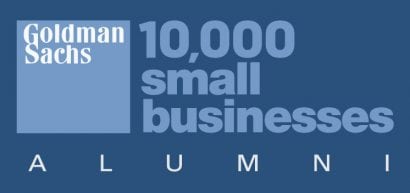
There’s a misconception in the world that says that the size of your organization should be mirrored by the size (and complexity) of your website – thus the local pizza place has a single page site with a phone number on it and the Museum of Modern Art has a vast, endless, deep site full of amazing content – just like the museum itself. The thing is – times have changed and the behaviour of web visitors has as well. This misconception about the relationship between organizational scale and web scale creates a condition of compounding complexity often leads to a web presence that is unwieldy and obsolete as it becomes “too big to fix”.
Granted, an institution with deep collections, products, or knowledge will find the web an easy place to store thing and grow them. As a repository, the web is almost endless and the ability to search and find information gives it an easy, 2-dimensional feel. A google search may drop you far, far into a website, many pages down – but it only took one click to get there.
In most cases though, organizations are not responding in their web strategy to the core question – “what does the customer want?”. We monitor the analytics on over 200 websites we have built for a wide variety of large and small organizations and in the last year or so we noticed a trend – no matter what the site, what the content, how deep the site is – user behavior, on average, is this: users enter your site, visit an average 3 pages, and then exit after 2:30 seconds. That’s it.
At first this seemed like a problem – “people aren’t engaging our content!” – but actually, it’s an opportunity. Web users today are not the same as they were 5 years ago. We are all experts at the web now – everyone knows that the fast way to the questions they have is a google query and a couple of clicks. “What time is the store open?”,”How do I find you?”, “Where do I park?”,”what time is the event?”, “who wrote Moby Dick?”. The opportunity is to design your web presence around the answers – connecting people as quickly as possible to the information they seek.
I’m not suggesting that every organization in every case take this approach – the web is a crucial area for telling stories, engaging users with complex ideas and narratives, and converting people to our tribe, brand, or belief – and doing that can be a complex and involved narrative. It is worth asking though – as you enter another cycle of rethinking your overall online presence – “What do people want? And what are they doing already?”. Your site analytics will often tell you a lot about what people are actually doing on your site, vs. what you believe they should be doing. On many sites for cultural organizations we manage – museums, theaters, art schools – the #1 most visited page is “hours and directions”.
“When are you open and where are you?”
Just because you are big doesn’t mean that you have to make your online world complex. Look at google.com – same as it ever was – a single page with a blank search bar. Is there a vast google universe behind that single page? Yes, but 99.9% of the time that wasn’t what you were looking for.
If this posts piques your interest and you would like to know more about my perspective on web design for organizations please get in touch. I love to talk about the possibilities and see if we can’t break down some paradigms and possibly save you a lot of time, money and hassle in the process!

